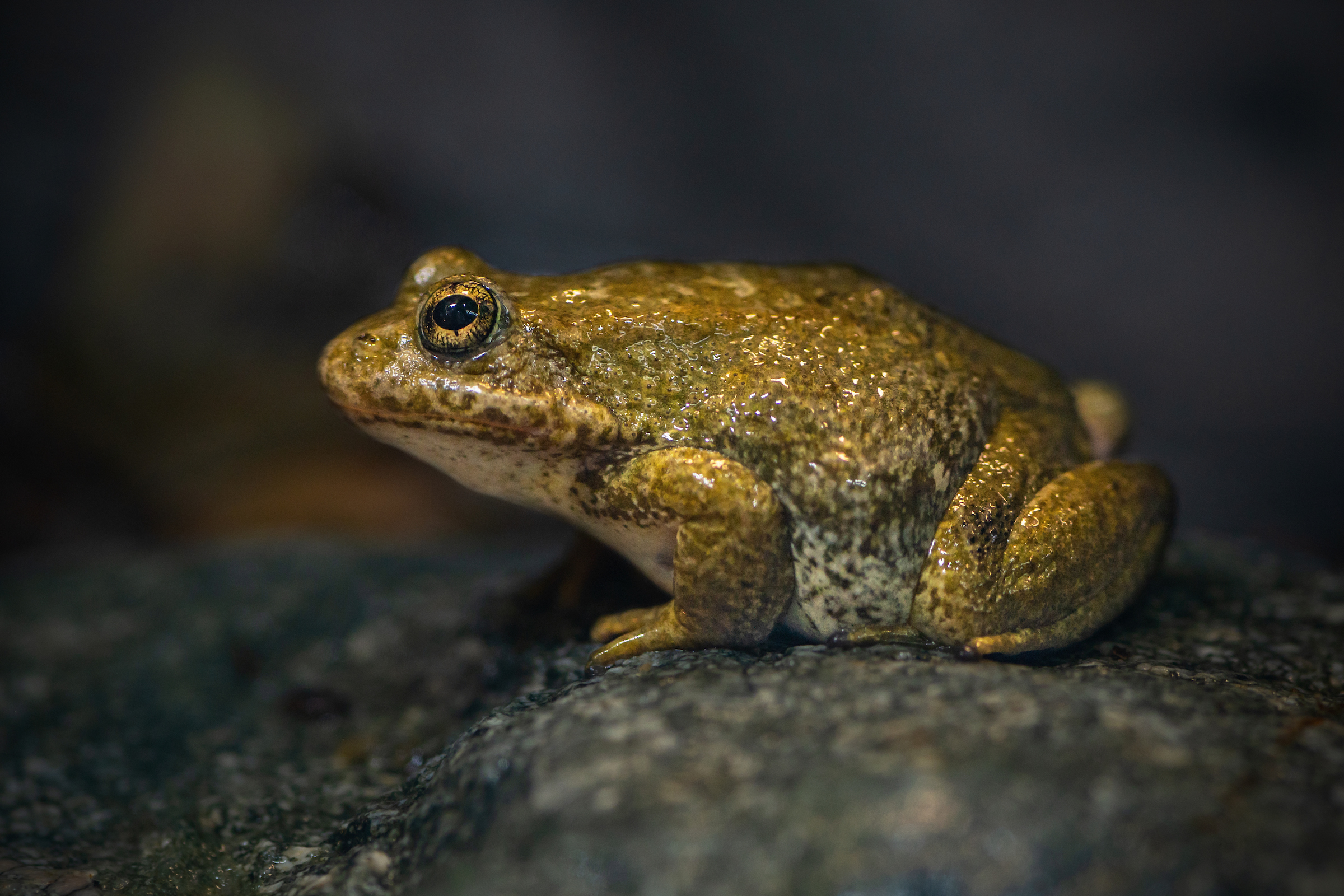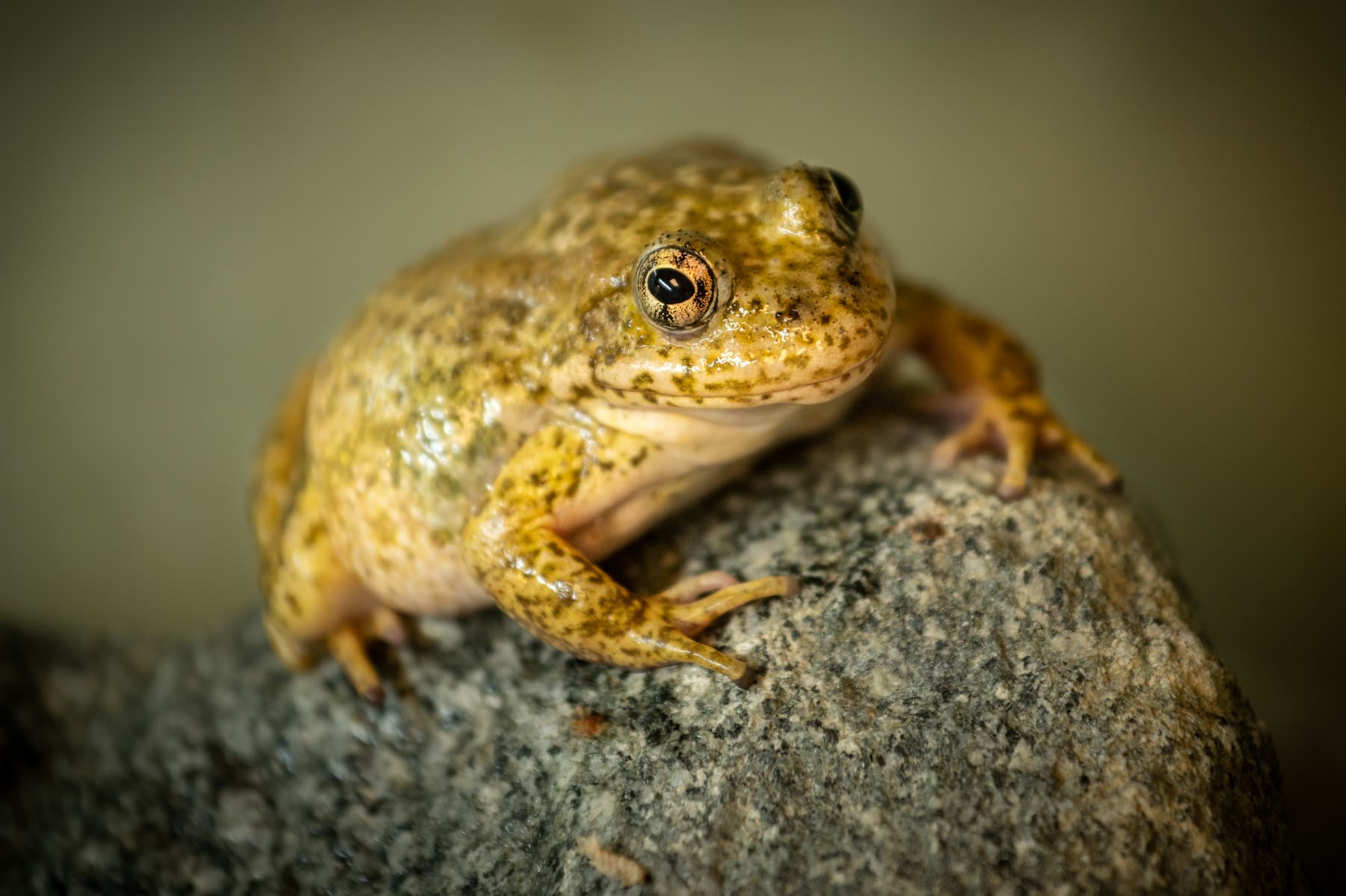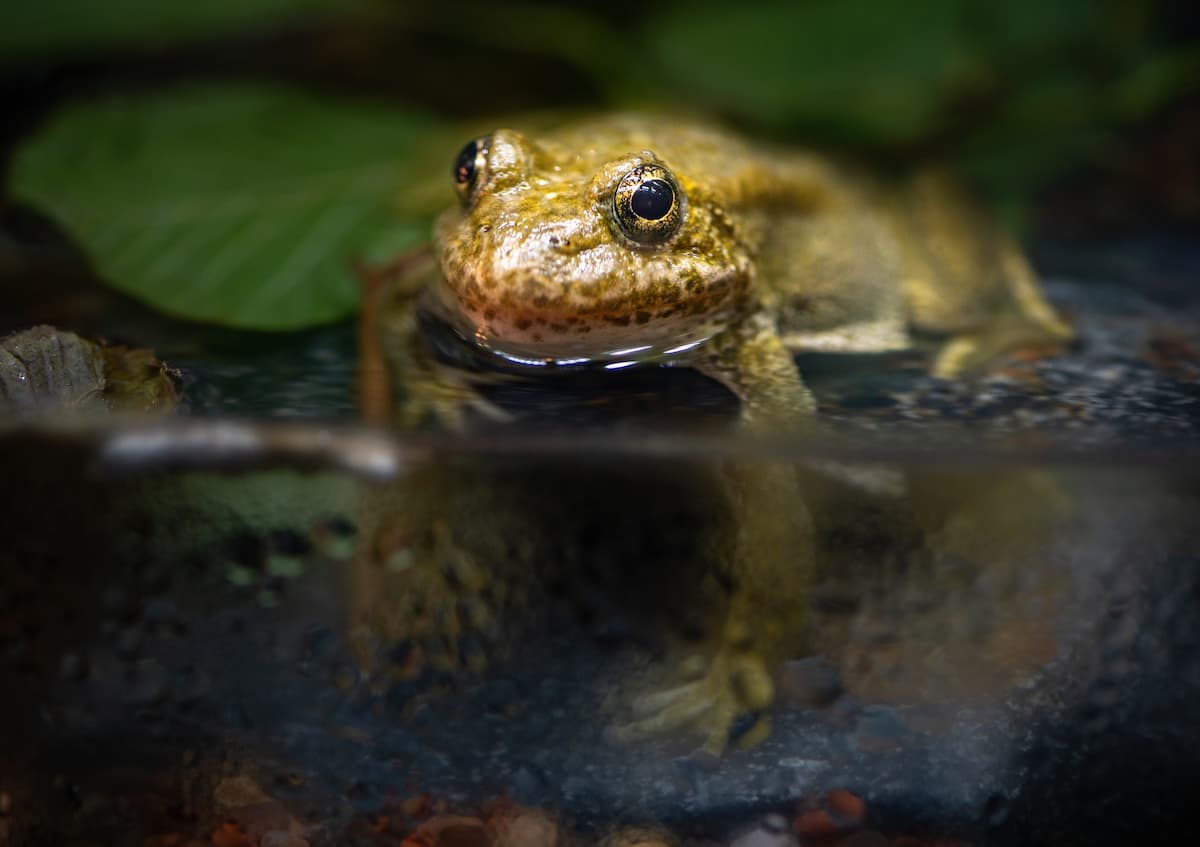About
Southern mountain yellow-legged frogs are an endangered species located right in our backyard in the San Gabriel Mountains! As amphibians, they depend on water. They are severely impacted by water pollution, and they are vulnerable to climate change— especially wildfires, floods, disease and drought. They have disappeared from 99% of their historic range.
It is estimated that about 200 frog species have gone extinct over the past 30 years. Frogs are seen as a “canary in the coal mine” species, because they have suffered large population losses due to factors that indicate trouble ahead for additional species.
The L.A. Zoo is working hard to stop this frog from going extinct. The Zoo has had unprecedented success breeding mountain yellow-legged frogs. In partnership with the U.S. Fish and Wildlife Service, U.S. Geological Survey (USGS), and the California Department of Fish and Wildlife, along with the San Diego Zoo Global, Aquarium of the Pacific, Omaha’s Henry Doorly Zoo, Santa Ana Zoo, the Los Angeles Zoo has released close to 6,000 zoo-bred/hatched Rana muscosa back to nature since 2006. It takes many people pooling their resources and expertise for this captive breeding and reintroduction program to be successful.
Southern mountain yellow-legged frogs are medium-sized frogs with long legs. As their name implies, they live in the mountains. Like many frogs, they have adapted to narrow climate niches. They are most active during the day, and adults are usually found within three feet of water, basking on rocks along the shoreline to raise their body temperature. Frogs are sit-and-wait predators; when prey comes within range, they strike using their large, sticky tongues to catch it and bring it into their mouths. When handled, the southern mountain yellow-legged frog emits a defensive odor that smells like garlic, a smell that repels some predators, including snakes. Frogs play a critical role in the ecosystem by eating large quantities of insects. Tadpoles keep waterways clean by feeding on algae and detritus. In turn, these frogs are an important food source for native predators, including the two-striped garter snake, Brewer’s blackbird, Clark’s nutcrackers, raccoons, and coyotes.

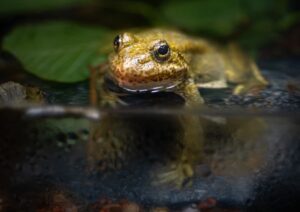
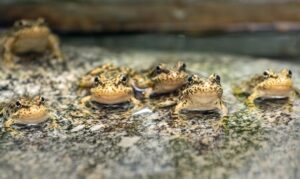
HABITAT
In the mountains of southern California, these frogs inhabit rocky streams in narrow canyons. Large, clear pools up to three feet deep are preferred.
DIET
Beetles, ants, bees, wasps, flies, and dragonflies. Tadpoles may also be consumed. Water is absorbed through the skin, so drinking is unnecessary.
PHYSICAL CHARACTERISTICS
Body length is about two inches. Lifespan is unknown, but they can live more than 20 years in human care.
LOCATION WITHIN THE ZOO
You’ll find the yellow-legged frogs in the LAIR’s Damp Forest section. See Zoo Map.

